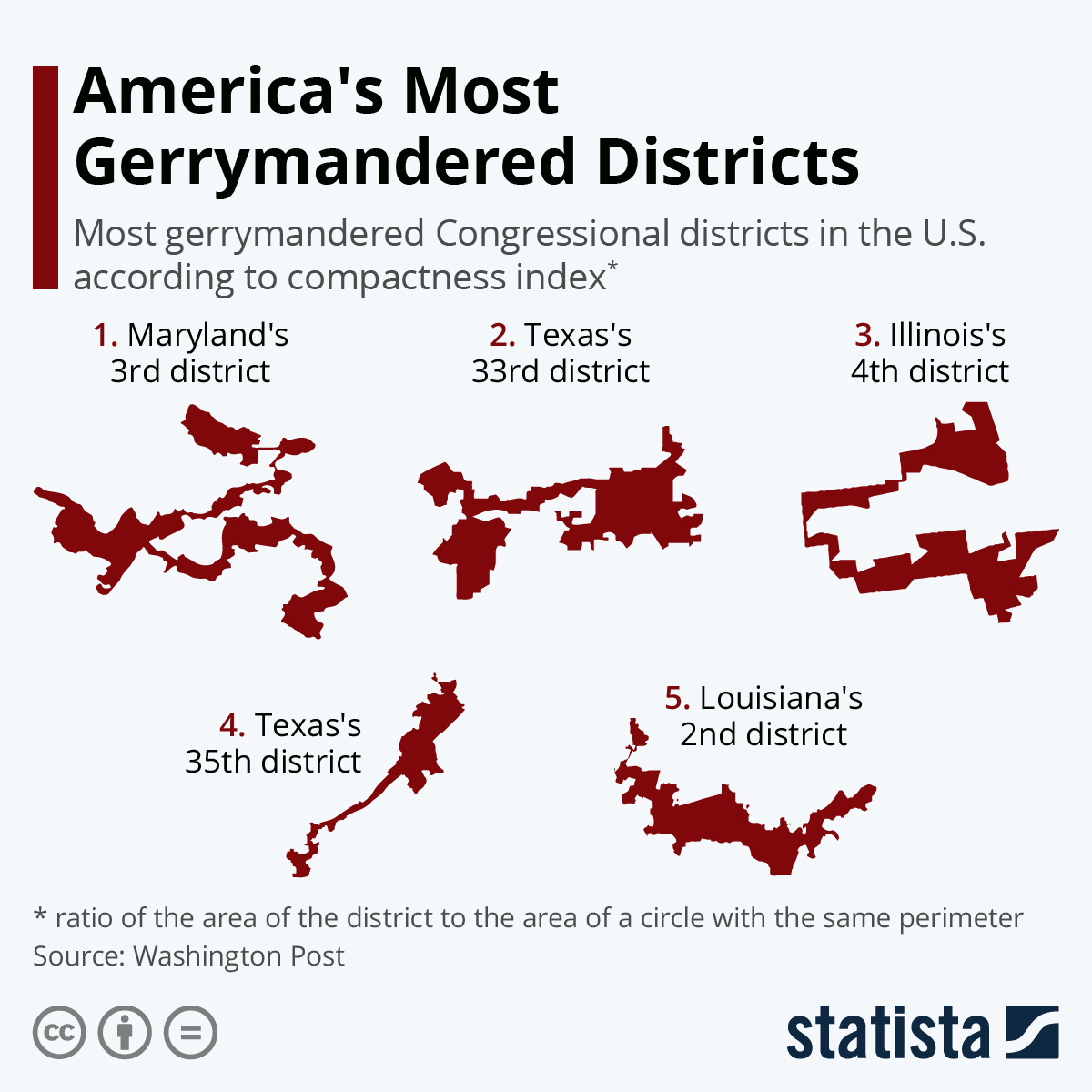Today is Census Day – a decennial occasion in the United States which marks the day when all U.S. homes have received an invitation to participate in the upcoming census.
The 2020 census will create a new basis for demographic statistics in the country, which in turn influences the allocation of federal fund as well as all sorts of decision making from economic incentives to emergency preparedness. Because those statistics also influence how many people should be in one Congressional district, their lines will (likely) have to be redrawn as well – doing away with all carefully gerrymandered districts created in the U.S. in the last ten years. Depending on state rules governing who can draw district lines they could return in several places though. Local elections are right now determining who will put pen to paper (and maps) in 2021.
A 2014 analysis by the Washington Post rated gerrymandered districts by their compactness (or lack thereof), calculating the ratio of the area of the district and the area of a circle with the same diameter as the district. Some districts in the ranking have since been redrawn by the respective states, but the top 5 that remain are shown in our graphic.
The practice of gerrymandering aims to lock as many voters of one party as possible into a district to give another party a better shot at winning one (or more) neighboring districts. The districts shown here – which were nicknamed “praying mantis” (Maryland’s 3rd) and “upside-down elephant (Texas’s 35th) by the Washington Post – are all currently held by Democrats.





















